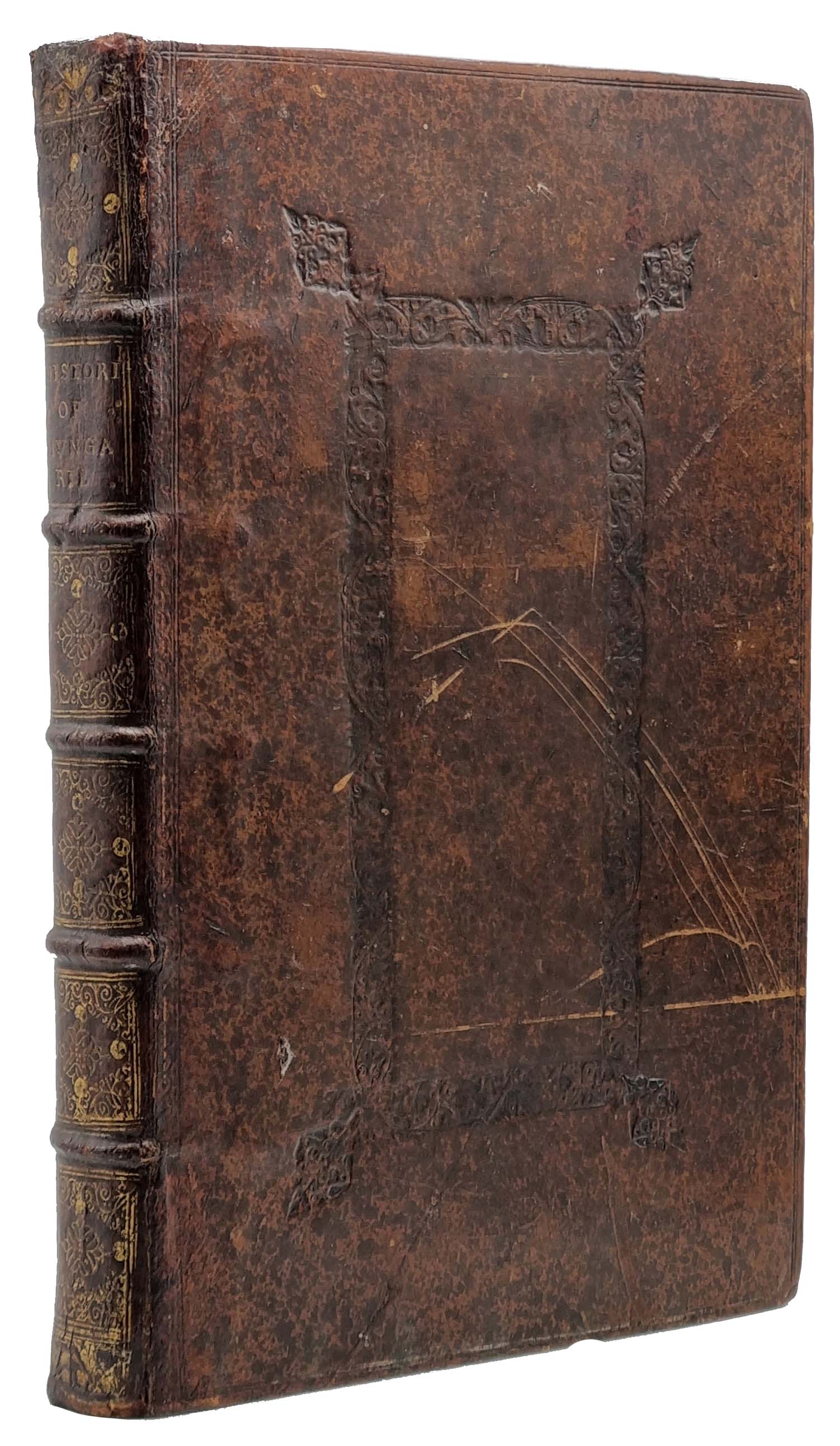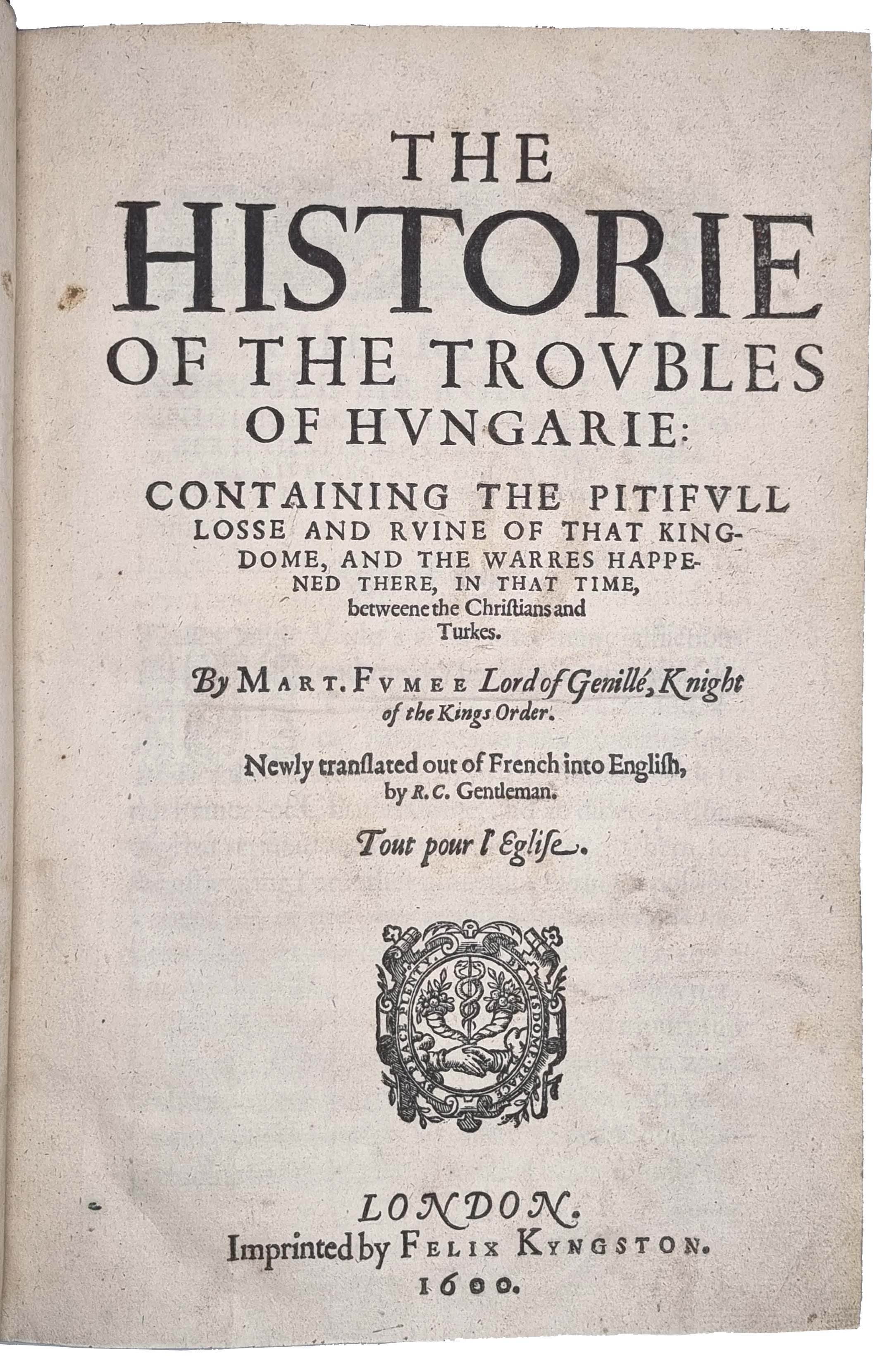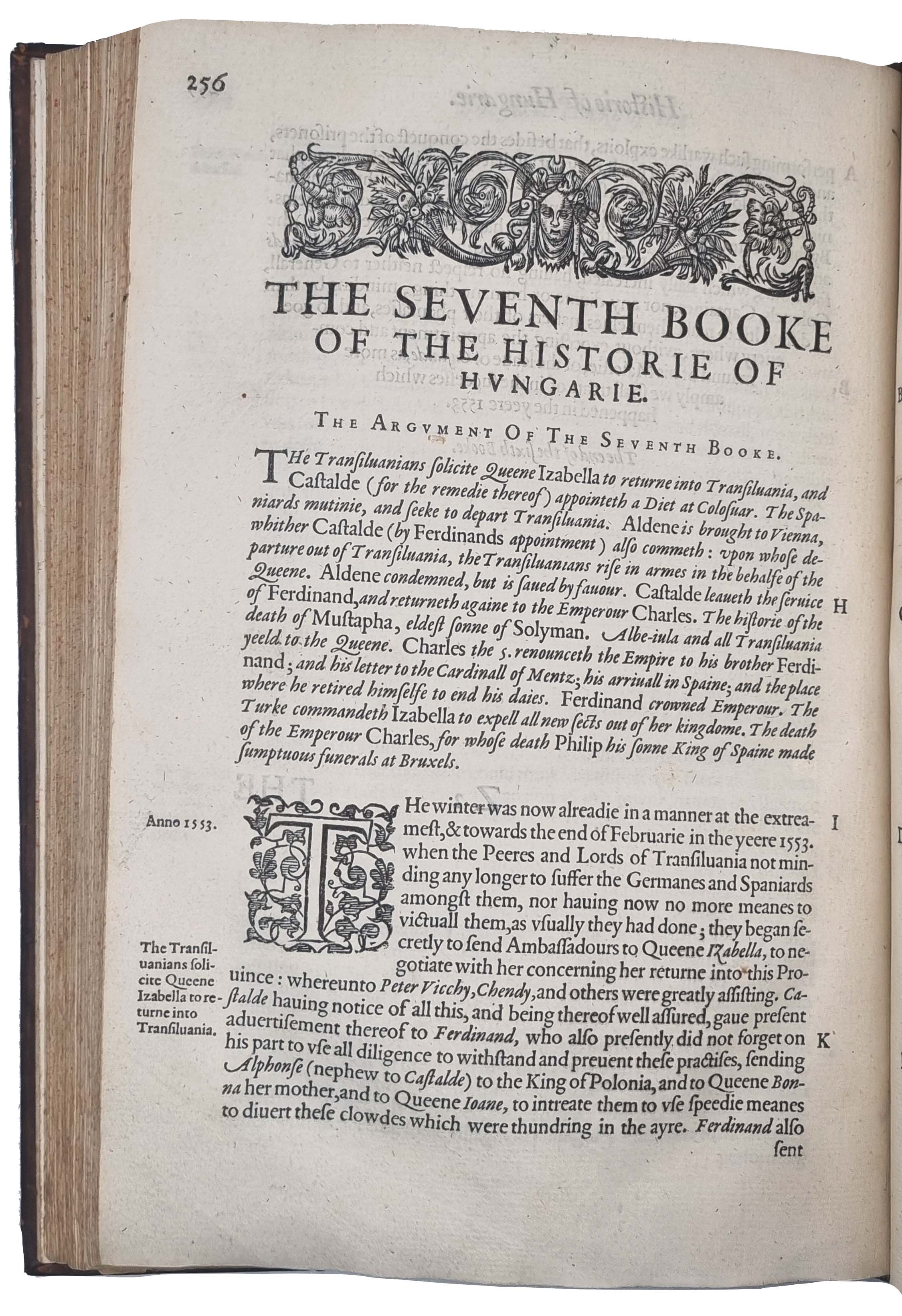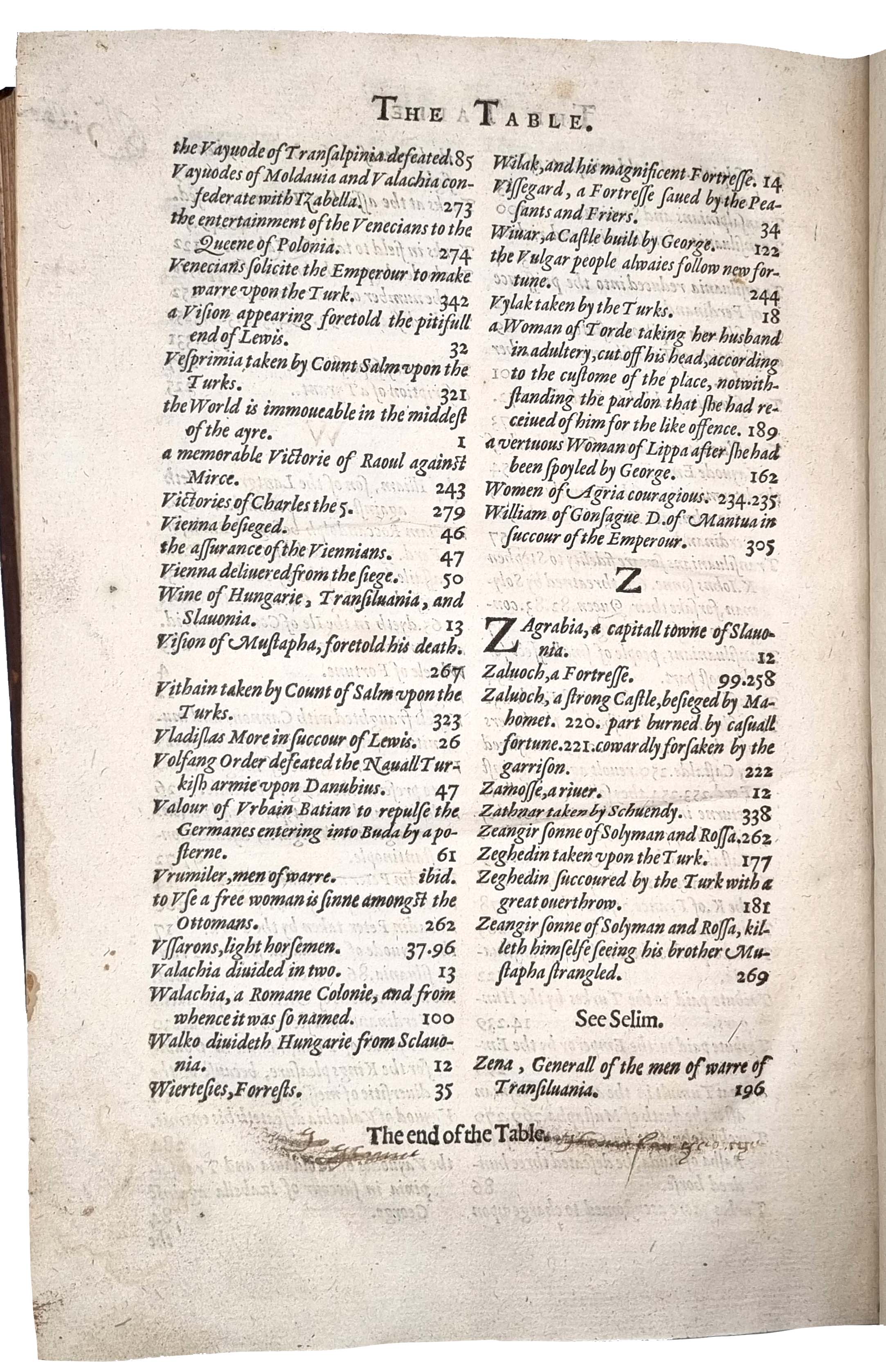FUMÉE, Martin
VERY HANDSOMELY BOUND
The historie of the troubles of Hungarie: containing the pitiful losse and ruine of that kinddome, and the warres happened there, in that time, betweene the Christians and Turkes
London, Felix Kingston, 1600£5,250.00
FIRST EDITION THUS. Small folio. pp. (xii) 356 (xxvi). Roman letter, some Italic. Printer’s device on title page, headpieces, floriated initials. Slightly later ms case mark ‘Inner L2-18’ to pastedown. Some yellowing, good margins. Creased and repaired at outer margin of p. 169. A few contemporary marginalia, possibly by ‘Gillow’ marginal autograph in contemporary hand, ‘THOMAS COWARD’ in early hand to one lower margin. In very handsome mid C17 mottled calf, central panel of floriated design with diamond shapes at each corner, decorated at joints, spine finely gilt, raised bands with morocco label.
First edition of the first English translation by Rooke Churche from the original French of Martin Fumée (1540-1590). This handsomely bound work contains a history of the recent subjugation of Hungary by the Ottoman Turks. The book commences with a dedication to Sir Robert Cecil. During this period the Kingdom of Hungary and its allies came head to head with the force of the Ottoman Empire, led by Suleiman the Magnificent. The account commences with the Battle of Mohács in 1526 where defeat marked the end of the Middle Ages in Hungary. Hungary was consequently divided between the Ottomans, the Habsburgs and the Principality of Transylvania.
The Ottomans came to Hungary at a time when the royal court had been in decline for a number of years following successive weak-willed leaders and feeble central authority. Hungary’s economy was suffering and the army as well as garrisons and borders fell into disrepair. Relations between the aristocrats and peasants were strained, culminating in a 1514 peasant revolt led by György Dózsa. Their ill treatment by the ruling classes meant they sided with the invading forces of the Ottoman Turks. Suleiman the Magnificent came to power in 1520, and sent at least one offer of peace to Hungary – which king Louis refused. Rebuffed, the Ottomans advanced towards Hungary. This came shortly after the historical Franco-Ottoman alliance, meaning that the forces against the central European country were coming from both East and West. The inefficient and old fashioned Hungarian army was ineffective against the battle hardened Ottomans, made up of artillery and musket-armed Janissaries. The battle resulted in Ottoman victory in 1526, but it was not until the 1541 Siege of Buda that the Turks occupied Hungary completely. The Battle of Mohács is to this day perceived as a national trauma, marking the end of the independent status of Hungary for almost five hundred years until the fall of the Soviet Union in 1989.
The original author of this piece of historiography, Martin Fumée, was a French writer and historian. He was a gentleman of the court of the Duke of Anjou and occupied the position of counsellor in Parliament in 1565 in place of his father. He was a prolific writer, and published on topics ranging from the History of the West Indies to an account on love by Athenagoras. The Historie of the troubles of Hungarie is written by him from a sympathetic perspective, despite the French alliance with the Ottomans. The translator, Rooke Churche, notes that Fumée himself had travelled in Hungary. Fumée’s highly detailed account derives from the work of István Brodarics (1470-1539), an eyewitness to the 1526 Battle of Mohács.
ESTC S121249; Lowndes 850; STC II 487.Out of stock





